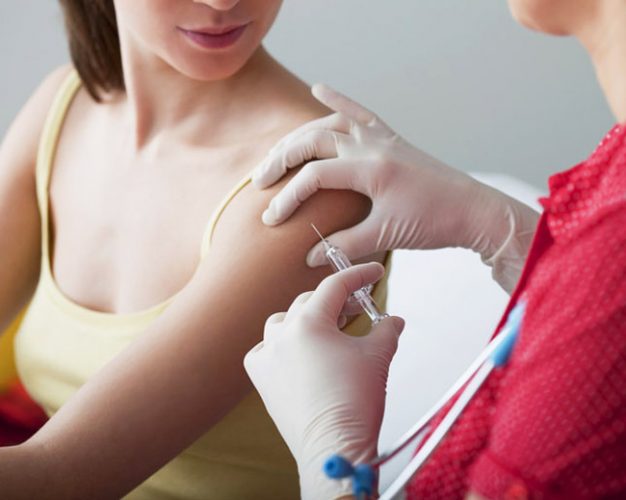The Cervical Health Awareness Month Theme this year is “Learn. Prevent. Screen”. The theme emphasizes the necessity of educating people with knowledge about minimizing cervical cancer risks and the life-saving importance of regular screenings.
What is Cervical Cancer

The cervix is the opening to the uterus and is located at the top of the vagina. It is covered by a thin layer of tissue made up of two types of cells:
1) “skin-like” cells called squamous cells and
2) glandular cells that produce the mucus in the cervix.
Cancer occurs when cervical cells become abnormal and, over time, grow out of control. The cancer cells invade deeper into the cervical tissue. In advanced cases, cancer cells can spread to other organs of the body.
Cervical screening regularly can help in preventing both localized and non-localized cervical cancer.
How to Prevent Cervical Cancer
According to the CDC, The most important things you can do to help prevent cervical cancer are to get vaccinated against HPV, have regular screening tests, and go back to the doctor if your screening test results are not normal.

The HPV vaccine Gardasil is approved by the U.S. Food and Drug Administration (FDA) for the prevention of cervical cancer caused by HPV (see Risk Factors) for people between ages 9 and 45. Gardasil 9 is available in the United States for preventing infection from HPV16, HPV18, and 5 other types of HPV linked with cancer.
To help prevent cervical cancer, HPV vaccination is recommended for all adolescents as part of their routine vaccines. It may be given starting at age 9. Talk with your healthcare provider about the appropriate schedule for vaccination as it may vary based on many factors, including age, gender, and vaccine availability.
Additional actions to help prevent cervical cancer include:
- Delaying first sexual intercourse until the late teens or older
- Limiting the number of sexual partners
- Practicing safer sex by using condoms and dental dams
- Avoiding sexual intercourse with people who have had many partners
- Avoiding sexual intercourse with people who are infected with genital warts or who show other symptoms
- Quitting smoking
Screening information for cervical cancer
Scientists have developed, and continue to develop, tests that can be used to screen a person for specific types of cancer before signs or symptoms appear. The overall goals of cancer screening are to:
Reduce the number of people who die from cancer, or eliminate deaths from the cancer
Reduce the number of people who develop the cancer
The following tests and procedures are used to screen for cervical cancer:
HPV test. This test is done on a sample of cells removed from the cervix
, the same sample used for the Pap test. This sample is tested for the strains of HPV most commonly linked to cervical cancer. HPV testing may be done by itself or combined with a Pap test. This test may also be done on a sample of cells collected from the vagina, which a person can collect on their own.
Pap test. The Pap test has been the most common test for early changes in cells that can lead to cervical cancer. This test is also called a Pap smear. A Pap test involves gathering a sample of cells from the cervix. It is often done at the same time as a bimanual pelvic exam as part of a gynecologic checkup. A Pap test may be combined with an HPV test.
Visual inspection with acetic acid (VIA). VIA is a screening test that can be done with a few tools and the naked eye. During VIA, a dilution of white vinegar is applied to the cervix. The health care provider then looks for abnormalities on the cervix, which will turn white when exposed to vinegar. This screening test is very useful in places where access to medical care is limited.
Screening for cervical cancer can be done during an appointment with a primary care doctor or a gynecologic specialist. In some areas, free or low-cost screening may be available.
source: https://www.cancer.net/cancer-types/cervical-cancer/screening-and-prevention
For more input: https://screening.iarc.fr/doc/SAcervical-cancer.pdf
Disclaimer
The Content is not intended to be a substitute for professional medical advice, diagnosis, or treatment. Always seek the advice of your physician or other qualified health provider with any questions you may have regarding a medical condition.